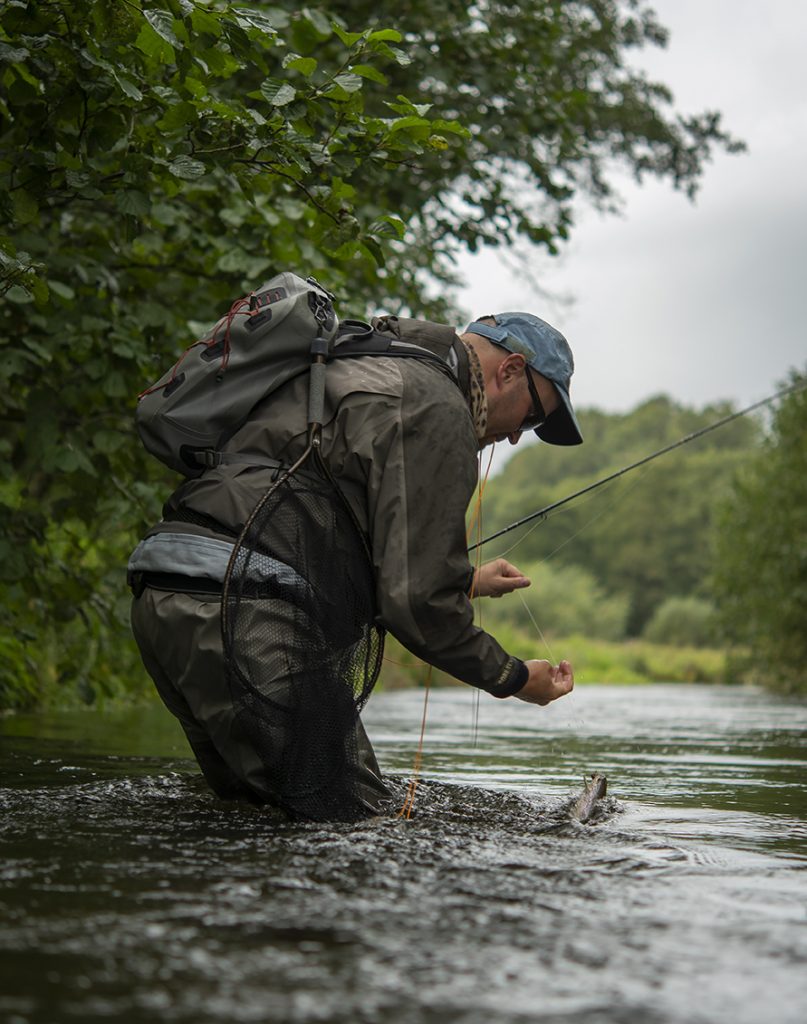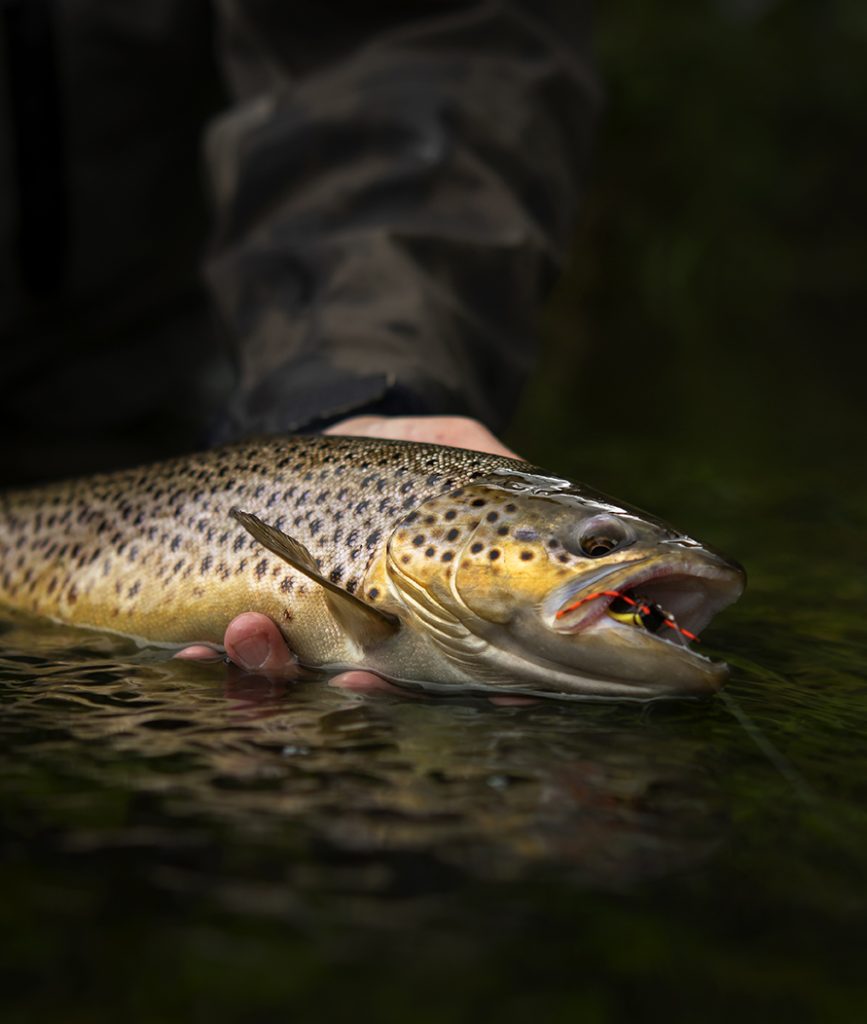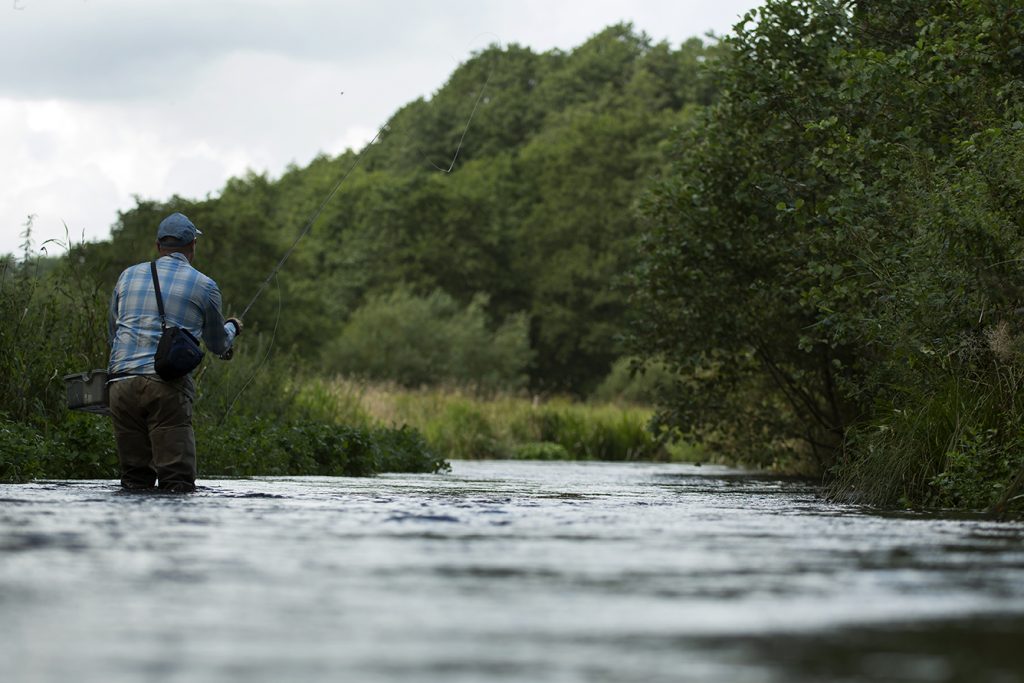
Summer fishing along the rivers is something special. The low land flora and fauna is humming and swaying. The swallows fly low to catch insects, the high pitch sounds a birds of prey patrolling the tree lines, the subdued rustle of a hedgehog, cows lazily grazing in the field, no wind, a setting sun and a bi-zillion mosquitos. It can be so idyllic and in a flash you can forget it all as a sea trout launches from the opposite bank to attack the fly in the middle of the river, just under the surface.

Fishing for sea trout in the river is exciting and challenging fishing. Surprisingly large sea trout can be caught in surprisingly small streams and several different methods are effective and used. One that has become increasingly popular over the last years is upstream fishing with large foam beetles. This is also perhaps the most effective way of fishing the smaller the streams you’re frequenting. I’ve found that it’s also the most effective method during the day, where I’ve sometimes lured a sea trout from its lie in conditions where I’d usually never target them (sun, no wind etc). The fishing is simple, cast up stream, strip back fast enough to make the fly draw a “V”, recast, strip, recast, strip – repeat, repeat. It takes a lot of casts, but they are worth the reward. The flies are simple too. A hook, some foam, some rubber legs and a little dubbing is all you need:
Fishing foam beetles up stream into the dusk is very effective too and even in the dark.

The more traditional approach is a down-and-across cast letting the fly swing across the surface, or typically just under it, perhaps adding speed by stripping the fly. The darker it gets, the more effective ridiculously large flies get. If they’re also tied to move a lot of water that doesn’t hurt either. The big flies are easy for the sea trout to spot against the sky and it’s clear that they provoke the sea trout, because the takes are always aggressive.

Big, bulky flies that movie plenty of water and can create a wake. Maybe add a little glow-in-the-dark materials, use a long tube to push the hook far back (sometimes sea trout tend to “strike short) and synthetic materials that don’t soak water.
Apart from foam flies during the day and huge tube flies in the dark, other flies can be effective during the day. Mads Pedersen from Denmark is also catching sea trout during the day using a weighted rabbit strip streamer. A special style of fly, which Mads has tied for out YouTube channel:
And why not try it all? Deep streamer during the day. Switch to foam beetles as evening approached and break the big ones as dark falls. I often bring a 5-wt for foam beetle fishing and a 7-wt to handle the bigger and more wind resistant flies for the dark hours.
Another way of adding attraction on the fly is by adding a small plastic disc in front of the tubefly. Like the way Martin Votborg has done it in this tying-video. The movement of the fly and the way it “pushes” the water is amazing, and the fish loves it.
Let me end with a little tip. I always fish single hooks in the Danish rivers. There’s lots of weeds and doubles and trebles constantly catch too much of that, especially if it’s also drifting. I also like the singles, because fish are easier to unhook and release. And finally, for the surface flies singles are lighter than doubles and trebles. It’s probably no surprise, but I use the Ahrex Tube Single HR 430/431 in sizes to match the tubes. For the foam beetles, I like the Ahrex NS 122 Light Stinger.

